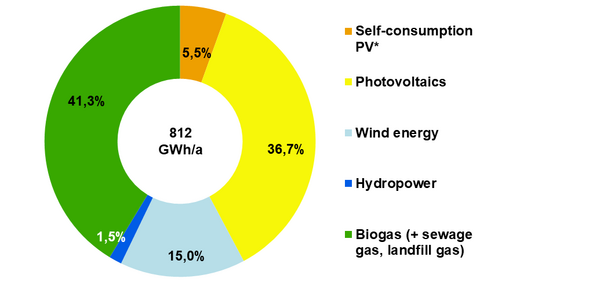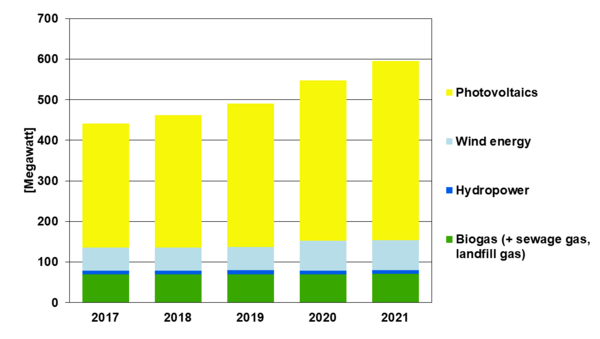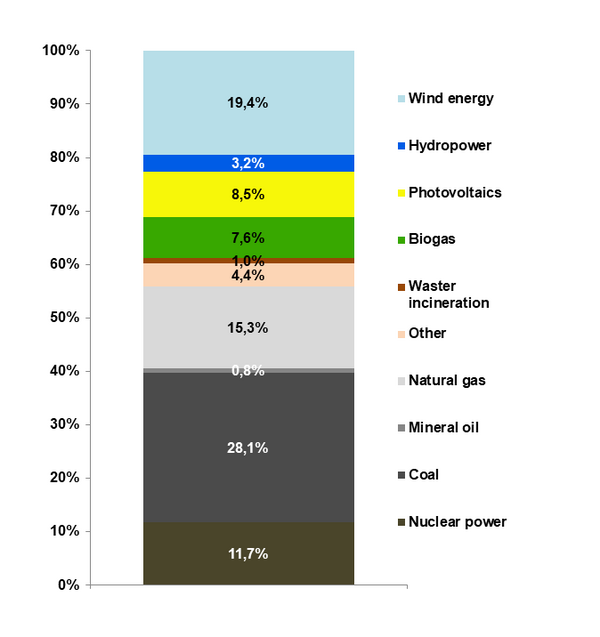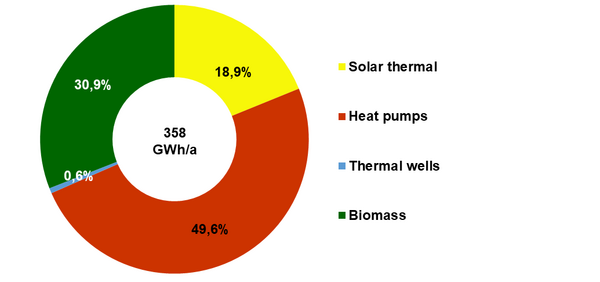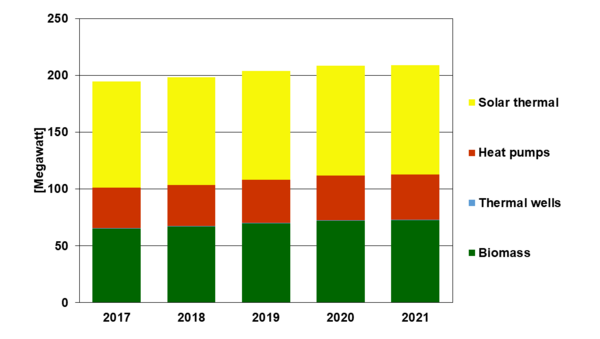Power generation
With the Hessian Energy Act of November 29, 2022, the government of the federal state of Hesse has set itself the goal of becoming climate-neutral by 2045. By then, 100 percent of the energy consumed for electricity and heat is to be covered by renewable energy sources. The Regional Authority FrankfurtRhineMain has committed itself to the climate protection goals of the state of Hesse through its active participation in the "Hessian Climate Communities" programme.
Electricity generation from renewable energies - biomass and photovoltaic are the most important energy sources
Local electricity generation from renewable energy sources accounted for 812 gigawatt hours in the Regional Authority FrankfurtRheinMain in 2021. Electricity generation from biogas, including sewage and landfill gas, accounted for the largest share with 41 percent. Photovoltaics, including estimated self-consumption, accounted for 42 percent. Wind power generated 15 percent and hydropower just under 1.5 percent.
* Self-consumption PV is an estimate of the amount of electricity from photovoltaic systems that is used on site and is not fed into the grid (IE-Leipzig 2020). This estimated value has been provided by the Hessen Agentur since 2019.
Electricity: Development of installed capacity of renewable energies (2017 to 2021)
For electricity, the installed capacity of renewable energies increased by 35 percent between 2017 - 2021, from 442 to 596 megawatts. The most significant increase was observed observed for photovoltaics, with around 45 percent.
Federal electricity mix: almost 40 percent from renewable energies
Regarding electricity generation, the federal electricity mix also plays an important role: In 2021, almost 40 percent of the electricity was generated by renewables - the main sources being wind, water, biogas and photovoltaics. Among fossil fuels, coal had the largest share with 28 percent. Nuclear energy accounted for 12 percent.
Heat generation from renewable energies - heat pumps play the main role
In the region, 358 gigawatt hours of heat were generated from renewable energies in 2021. Heat pumps produced about half of the total . Biomass generated 31 percent of local renewable heat. This includes wood and residual materials for private households, such as pellets. The share of solar thermal was 19 percent. Just under 1 percent of local renewable heat was generated from thermal springs.
Heat: Development of installed capacity of renewable energies (2017 to 2021)
Like electricity generation from renewable sources, heat generation from renewable sources also increased from 2017 to 2021. Compared to 2017, local installed capacity increased by around 7 percent by 2021. The largest increase was due to heat pumps with almost 12 percent or 4 megawatts, closely followed by biomass with 11 percent or 7 megawatts.
Data basis on electricity and heat consumption
The information on electricity and heat consumption in the region has been compiled from the municipal energy profile for the Regional Authority FrankfurtRheinMain (as of 2019). You can find the profile as well as detailed data on the individual member municipalities and administrative districts under Municipal Energy Profiles and in the Climate-Energy-Atlas. When calculating the energy profiles, we are dependent on the availability of various third-party data, some of which are published with a delay of several years.

